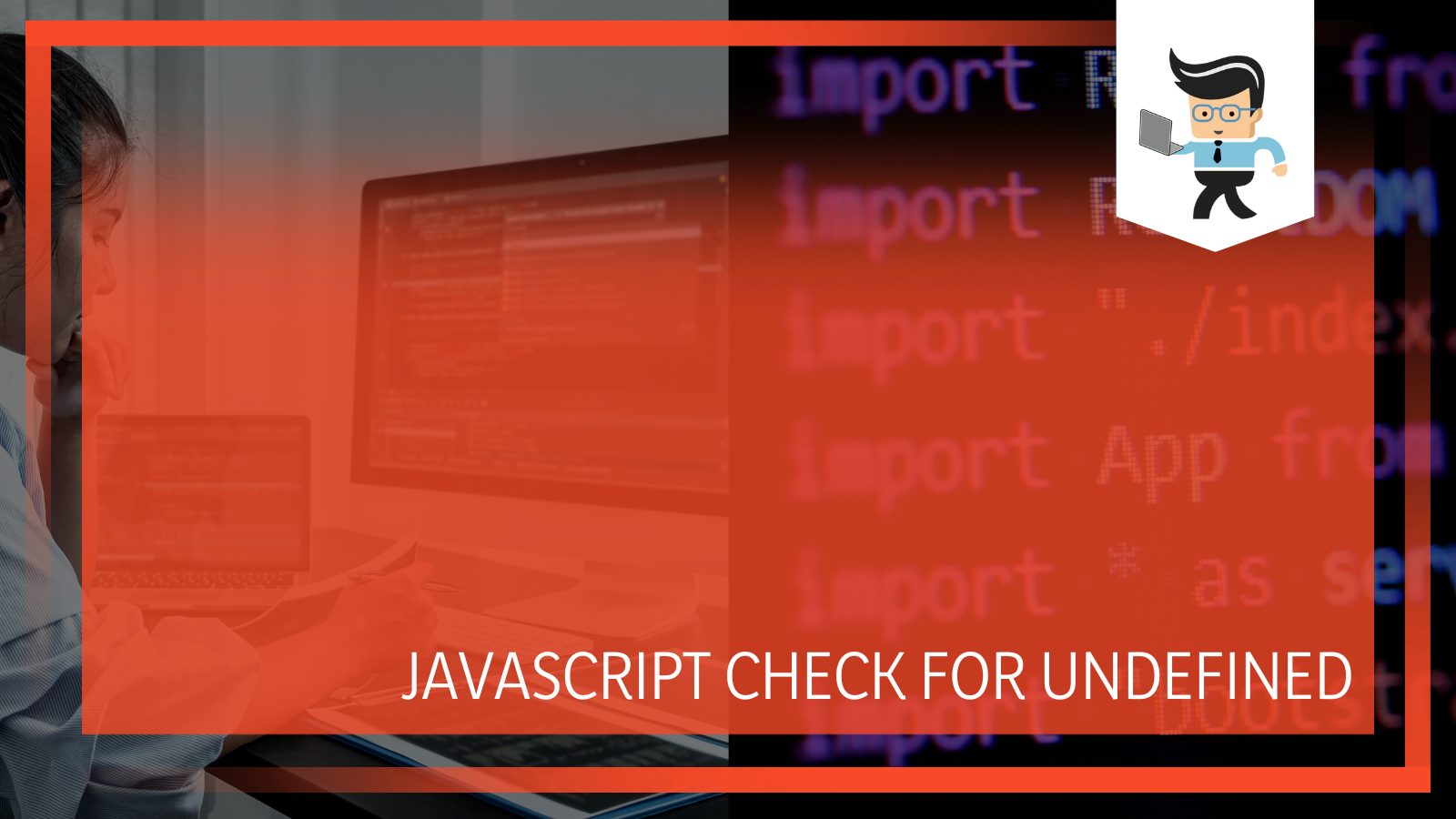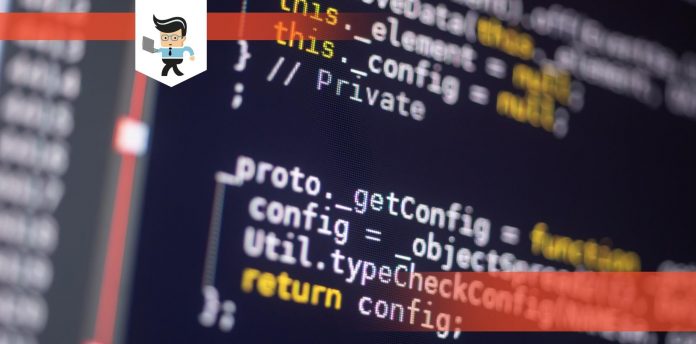In JavaScript check for undefined, we must remember that it is not a reserved keyword so declaration of a variable with undefined is possible.

To JavaScript test for undefined variables/properties, we can use the typeof operator.
Keep reading this article to learn how to properly use check if undefined JavaScript variables and properties.
Contents
- How To Check for Undefined in Javascript
- FAQs
- – What Is Undefined in JavaScript?
- – Which Browsers Support Javascript Test for Undefined?
- – What Does the Value Assigned Mean for Undefined in Javascript?
- – What Is the Problem of a Null Variable When Working With Javascript Undefined Check?
- – How To Prevent Reference Error When Using Javascript Check for Undefined?
- – How To Check for Object Properties When Using Javascript Test for Undefined?
- – How To Fix an Undefined Variable Error in Javascript?
- – How Do You Define an Undefined Variable?
- – Is the JavaScript Test for Undefined False?
- – Why Does Undefined Return True in JavaScript?
- – Why Do We Use === In JavaScript Undefined Check?
- – Is It Possible To Pass Undefined Variables to a Function in Javascript?
- – What Makes a Function Undefined?
- Final Thoughts
How To Check for Undefined in Javascript
Before moving on to examples, let’s review the syntax to use in order to check for undefined in JavaScript, with the syntax being undefined:
-
Example
| let x; if (typeof x === “undefined”) { text = “x is undefined”; } else { text = “x is defined”; } |
-
Analysis
In the example above, we can see the typeof operator and the undefined variable. The result of this example would be x, which is undefined.
-
Example
| <!DOCTYPE html> <html> <body> <h1>This is a JavaScript global properties example</h1> <h2>In this example, we are using the undefined property</h2> <p id=”demo”></p> <script> let x; if (typeof x === “undefined”) { text = “x is undefined”; } else { text = “x is defined”; } document.getElementById(“demo”).innerHTML = text; </script> </body> </html> |
-
Analysis
The example above shows an elaborate example of x that is undefined. Just like the previous example, the typeof operator is used here. The result we get would be the same as the one above, with an undefined x.
-
Check if Undefined Code Example
| <!DOCTYPE html> <html> <body> <h1>This is a JavaScript global properties example</h1> <h2>In this example, we are using the undefined property</h2> <p id=”demo”></p> <script> if (typeof y === “undefined”) { text = “y is undefined”; } else { text = “y is defined”; } document.getElementById(“demo”).innerHTML = text; </script> </body> </html> |
-
Check if Undefined Example Analysis
Instead of using x as our undefined variable, this time we have used y in the example above. In all examples shown above, we are using the typeof operator because it does not throw an error if the variable is undeclared.
-
Code Example: Strict Equality
Just like the typeof operator, we can use the strict equality and inequality operators to check if undefined JavaScript exists in a code.
| var x; if (x === undefined) { } else { } |
-
Analysis
In the above code, variable x is not initialized and the if statement is truly evaluated. The if statement is executed while the else statement is not. Instead of using the commonly used equality operator, we have used the strict equality operator because the undefined x would check for null as well.
An alternate method would be the widely used typeof operator as shown in the previous example above.
-
Code Example
| if (typeof x === ‘undefined’) { // evaluates to true without errors } if (x === undefined) { } |
-
Reference Error Example Analysis
In the example given above, the x was not declared, so when we use x without the typeof, the reference error is inevitable.
-
Global Context Code Example
| if (‘x’ in window) { } |
-
Analysis
Using the global context is yet another substitute as JavaScript is a scoped language and the enclosed context can help us check for undefined in JavaScript. By checking the existence of a property on the global object, we can JavaScript undefined check by using the in operator as shown above.
-
Void Operator Code Example
| var x; if (x === void 0) { } if (y === void 0) { } |
-
Analysis
Using the void operator is also possible. The x variable would be executed and if the y is undeclared, the reference error would be thrown.

FAQs
Here are the answers to some of your questions regarding JavaScript check for Undefined.
– What Is Undefined in JavaScript?
JavaScript Undefined is a variable without a value; in other words, the value is primitive so before using a variable or an object, no value is assigned. The value in this case would be unknown or none. In simple terms, this means that the undefined is not declared in JavaScript. To see if there is no value, we have to check if undefined JavaScript exists.
As mentioned earlier, we use the typeof operator to check for undefined variables or properties. We must note that undefined in JavaScript belongs to the global object property, meaning it is a variable. When using it with browsers such as Firefox four and above, the ECMAScript causes this variable to be non-writable and configurable.
Sometimes, the undefined is used as an identifier, but doing so is not recommended as the code can be complex and debugging is a major hindrance.
– Which Browsers Support Javascript Test for Undefined?
Since undefined () is a part of ES1, it is fully supported on all the browsers such as Chrome, Internet Explorer, Edge, Firefox, Safari and Opera. However, as mentioned earlier, Firefox 4+ may behave differently.
– What Does the Value Assigned Mean for Undefined in Javascript?
Undefined in JavaScript is any value that has not been assigned or declared. This can be iterated for methods and statements that are undefined (not having assigned values). Functions can be undefined as well if there is no value.
Check out the following case that should be avoided:
| (function() { var undefined = ‘foo’; console.log(undefined, typeof undefined); })(); (function(undefined) { console.log(undefined, typeof undefined); })(‘foo’); |
– What Is the Problem of a Null Variable When Working With Javascript Undefined Check?
The problem with null variables and an undefined variable arises when the null variable passes a JavaScript test for undefined. This occurs if the code is not written properly and the values slip through. To prevent such an issue, we use strict equality.
| let x; const y = null; x == null && y == undefined; // This will be true x === null || y === undefined; // This will bring false x == null && typeof x == ‘object’; // Another false here x === undefined && typeof x == ‘undefined’; // Lastly, this would be a true |
– How To Prevent Reference Error When Using Javascript Check for Undefined?
Instead of using strictly equal or other operators mentioned above, be sure to use the typeof operator to prevent errors. In doing so, we can prevent the reference error that is common if written without the typeof operator.
| x === undefined; // This is a simple usage without typeof and will throw the reference error typeof x == ‘undefined’; // This will not throw the reference error and would return true |
Do keep in mind that if we declare x at a later time while using the let or const keyword, a reference error will be the result.
| typeof x; // This will throw the reference error as the x cannot be accessed before its initiation and due to the usage of the let keyword. let x = yourpreferredvalue; |
– How To Check for Object Properties When Using Javascript Test for Undefined?
When working with object properties, if we access a property that doesn’t exist within that object, the value of that property would be deemed as undefined and a reference error would not be thrown.
| const obj = { answer: thepreferredoutput, question: undefined }; obj.answer; // the answer would be listed here obj.question; // this would be undefined obj.notInObject; // this would be undefined as well |
– How To Fix an Undefined Variable Error in Javascript?
Uninitiated variables can cause issues when initial values are assigned, so to fix this error, we must ensure that the variables are uninitiated.
– How Do You Define an Undefined Variable?
In some programming languages, the declaration of a variable is done first, but defining an undefined variable is different as it is accessed within the code but without the assignment of a value or a declaration.
– Is the JavaScript Test for Undefined False?
Any value that returns as false while checking for a variable is a false output. In JavaScript, undefined is a part of the false value group containing null, NaN, 0, “” and false itself.
– Why Does Undefined Return True in JavaScript?
Although undefined initially converts to false, undefined always returns true before being rejected. The false values are called falsy values. However, not all values are false — others are truthy values; therefore, they return true.
– Why Do We Use === In JavaScript Undefined Check?
In short, === is used to check for the data type and compare the two values. To assign values in JavaScript, = is usually used. == is used to compare two variables and === is used to compare variables while checking for the strict type.
– Is It Possible To Pass Undefined Variables to a Function in Javascript?
If we do not pass the arguments into a function, its parameters will have undefined values, so the default value in a parameter is undefined and it is possible to pass undefined to a function.
– What Makes a Function Undefined?
A function would be undefined if no values are assigned to the negative arguments considering the function is valued.
Final Thoughts
In the article above, we have discussed the following points:
- We discussed that JavaScript undefined is a variable without a value.
- Using the typeof operator can tell you if an object property is undefined.
- There are also alternatives to typeof operator, such as strict equality, global context, void operator and reference error.
- A function would be undefined if no values are assigned to the negative arguments.
We hope the guide above has shown ample examples along with the common issues developers face during their coding routine. For more information, visit our extensive blog section.
Thank you for reading!







